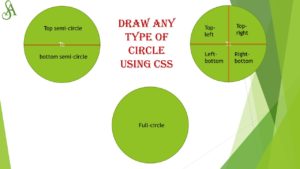In the world of web development, Angular stands tall as one of the most popular frameworks for building dynamic and interactive web applications. With its robust features and extensive ecosystem, Angular offers developers a powerful toolset to create stunning user interfaces. However, to truly enhance the aesthetics and responsiveness of your Angular applications, integrating Bootstrap can be a game-changer.
Bootstrap, a front-end framework developed by Twitter, provides a plethora of pre-designed components and styles that can streamline the process of building a visually appealing and mobile-friendly website. In this guide, we’ll walk through the steps to seamlessly integrate Bootstrap into your Angular project, empowering you to create sleek and modern web applications with ease.
Table of Contents
Step 1: Set Up Your Angular Project
First things first, ensure you have Node.js and Angular CLI installed on your machine. If not, you can easily install them by following the official documentation:
- Node.js: https://nodejs.org
- Angular CLI: https://angular.io/cli
Once you have Angular CLI installed, create a new Angular project using the following command:
ng new my-bootstrap-app
Navigate into your project directory:
cd my-bootstrap-app
Step 2: Install Bootstrap
With your Angular project set up, it’s time to install Bootstrap. Fortunately, Angular provides a convenient way to integrate third-party libraries using Angular CLI. Simply run the following command to install Bootstrap:
npm install bootstrap
Step 3: Import Bootstrap Styles
After installing Bootstrap, you need to import its styles into your Angular project. Open the styles.css file located in the src directory of your project, and add the following line:
@import "~bootstrap/dist/css/bootstrap.min.css";
This line imports Bootstrap’s CSS into your project, allowing you to utilize its styling across your components.
Step 4: Utilize Bootstrap Components
Now that Bootstrap is integrated into your Angular project, you can start leveraging its powerful components to enhance your application’s UI. Whether you need responsive layouts, navigation bars, buttons, forms, or any other UI element, Bootstrap has got you covered.
To utilize Bootstrap components in your Angular templates, simply refer to Bootstrap’s documentation and incorporate the necessary HTML markup and classes into your Angular components.
Step 5: Customize and Extend
While Bootstrap offers a wide range of ready-made components, you may find the need to customize or extend them to better suit your project’s requirements. Thankfully, Bootstrap provides extensive documentation and customization options, allowing you to tweak its styles and behaviors to match your design preferences.
Additionally, you can leverage Angular’s powerful features such as directives, services, and pipes to extend Bootstrap’s functionality and create custom reusable components tailored to your specific needs.
Conclusion
Integrating Bootstrap into your Angular project can significantly expedite the development process and elevate the visual appeal of your web applications. By following the steps outlined in this guide, you’ll be well-equipped to harness the power of Bootstrap’s extensive component library and seamlessly integrate it into your Angular projects. So why wait? Start building stunning web applications today with the winning combination of Angular and Bootstrap!


